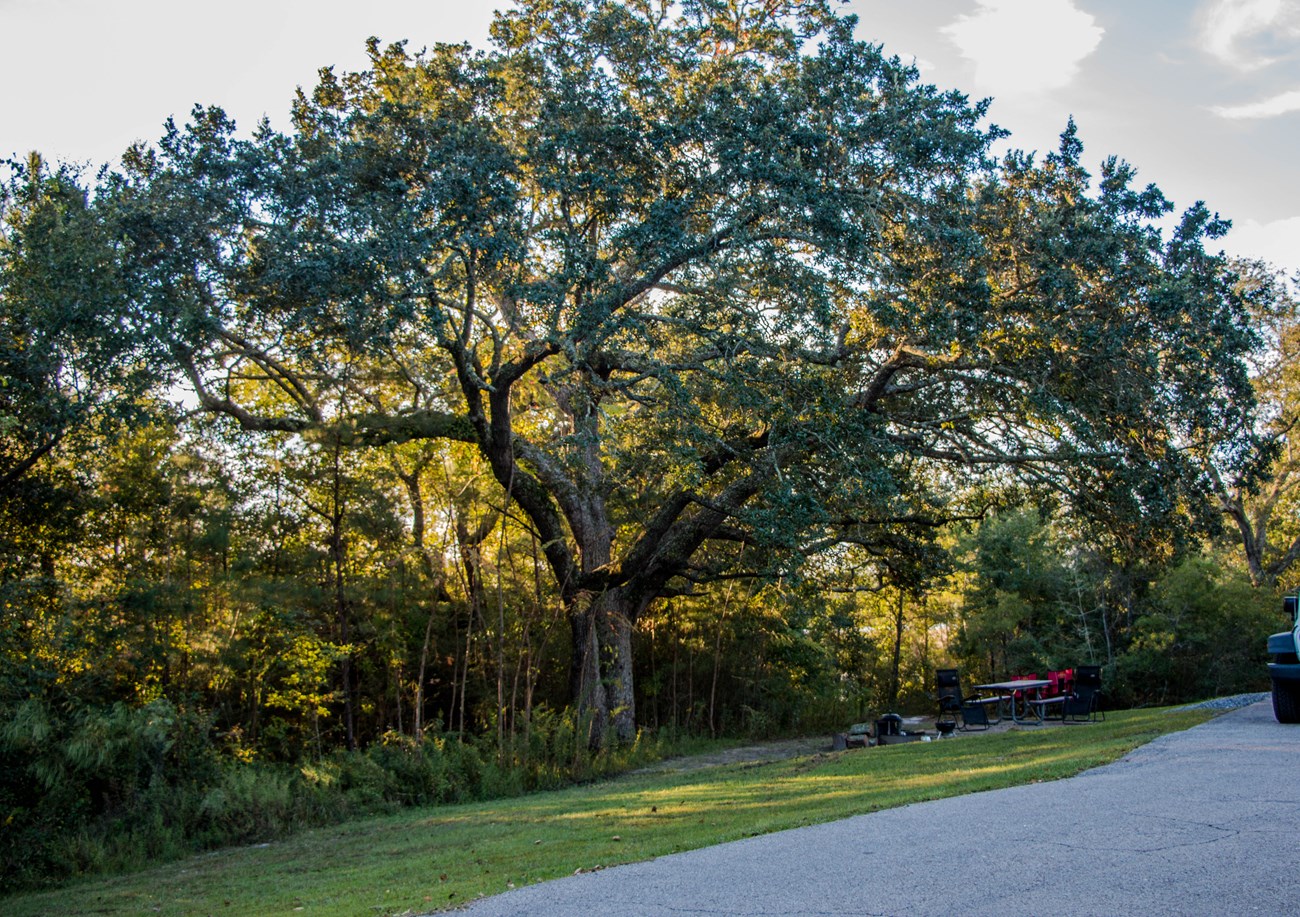Last updated: January 3, 2020
Article
Live Oak Tree

NPS Photo
The Mighty Quercus virginiana
Quercus virginiana trees are a fixture of the maritime landscape along the southern coastline.
Known as “live oaks” for their ever-green properties, the Q. virginiana is native to the southern region of the United States. The live oak is known for its impressive size, heartiness, and density.
A live oak can grow up to 80 feet tall, spread its branches more than 120 feet across, and its roots can span 90 feet. The lower sections of the trunk are generally short and stout, with its upper sprouting large branches in every direction. Its leaves are small and oval-shaped with a leathery texture. The dramatic spread of its branches provides ample shade while also serving as a barrier in high winds. The live oaks’ tendency to grow along the coast means it has adapted to tolerate blustery conditions, sandy soil, and salt spray.
Some live oaks, like those found on barrier islands, exhibit evidence of salt pruning. The excess salt slowly kills the leaves and branches closest to the Gulf, creating a hedge-like effect. This causes the trees to look less like their more inland counterparts, with branches curving away from the shore. Salt pruned live oaks are smaller, as the continuous influx of salt inhibits its growth. A second variety of live oak, Quercus geminata, is more often found in the immediate dune area of maritime forests. These are closely related to the larger, grander Q. virginiana but appear shrub-like with short, bushy growth patterns.
The spread and size of Q. virginiana mean that many plants and animals rely on its branches for survival. In addition to the woodland critters like squirrels and birds, other plants call live oak trees home. Many live oaks in the south are draped with spanish moss (Tillandsia usneoides), an epiphytic plant that is not rooted in soil like true moss. The tendrils of spanish moss can extend nearly 20 feet. Its abundance on live oaks is well documented. French explorers called the plant spanish beard.
The density of live oaks led to its use in naval ship construction. The wood can weigh up to 75 pounds per cubic foot, or equal to the weight of a bison calf! Live oaks are also resistant to rot and most disease. Oak wilt, however, is a type of fungus that is attacking groves of Q. virginiana throughout the south, leading to its current decline.
